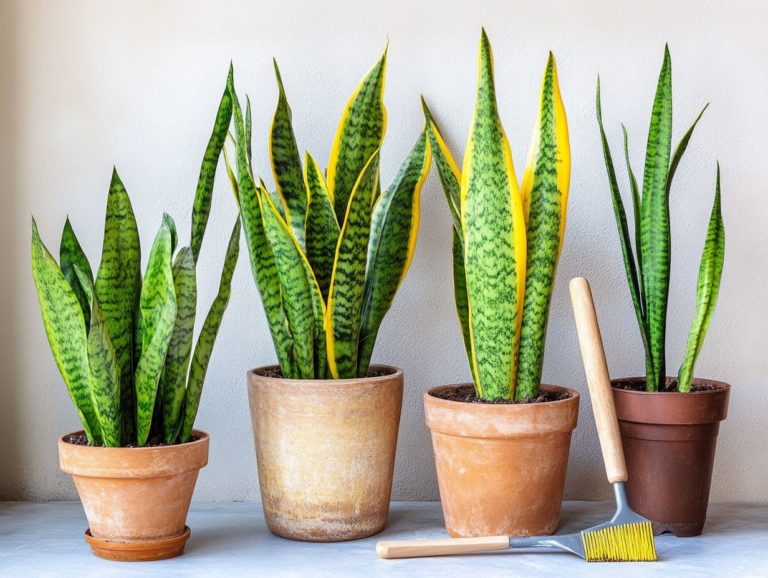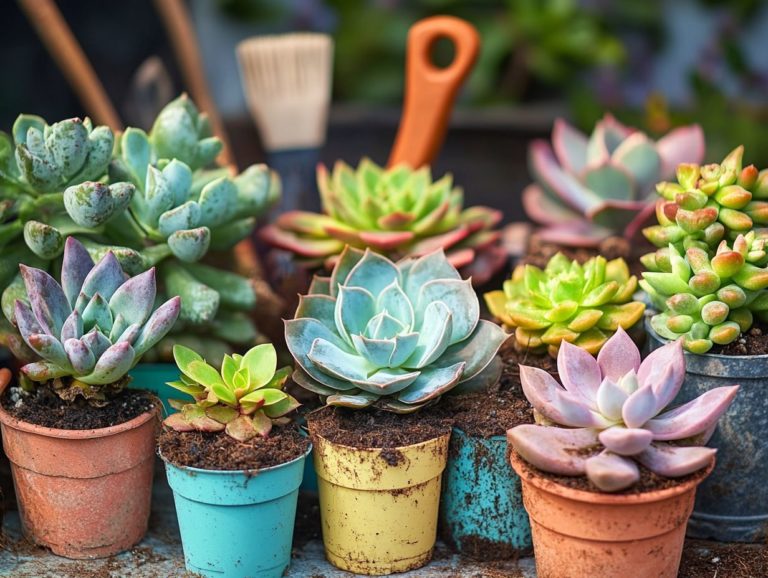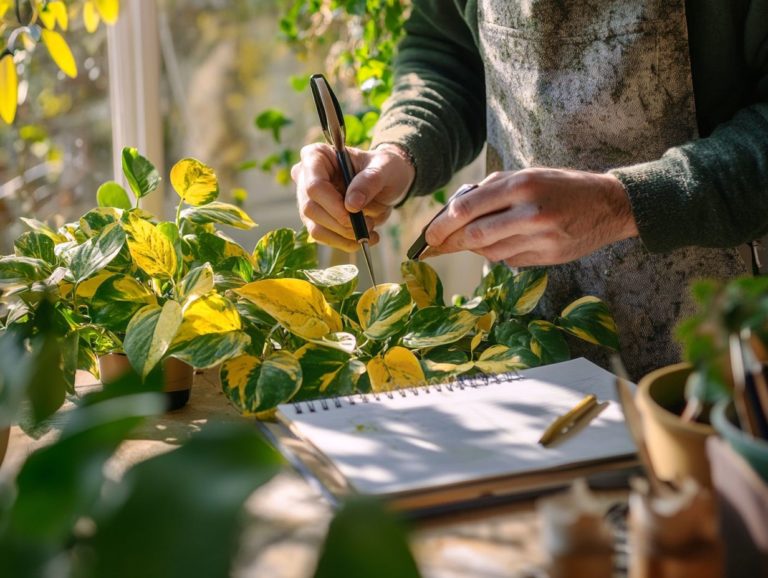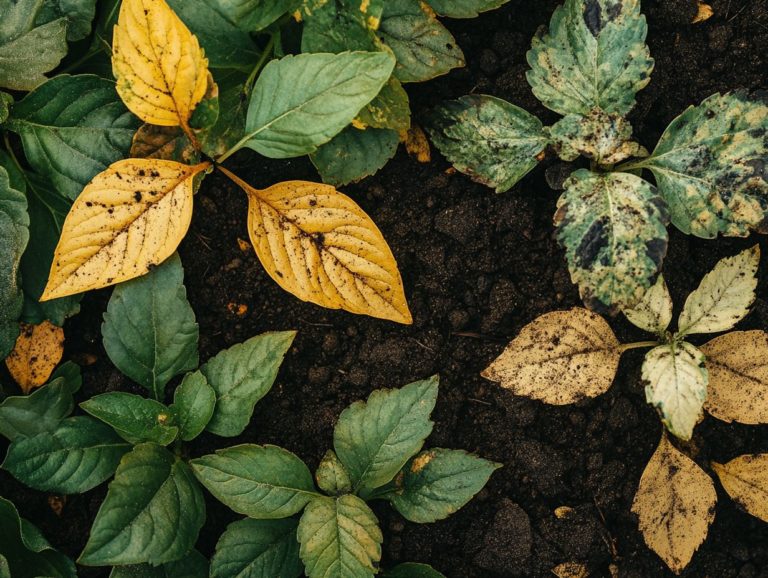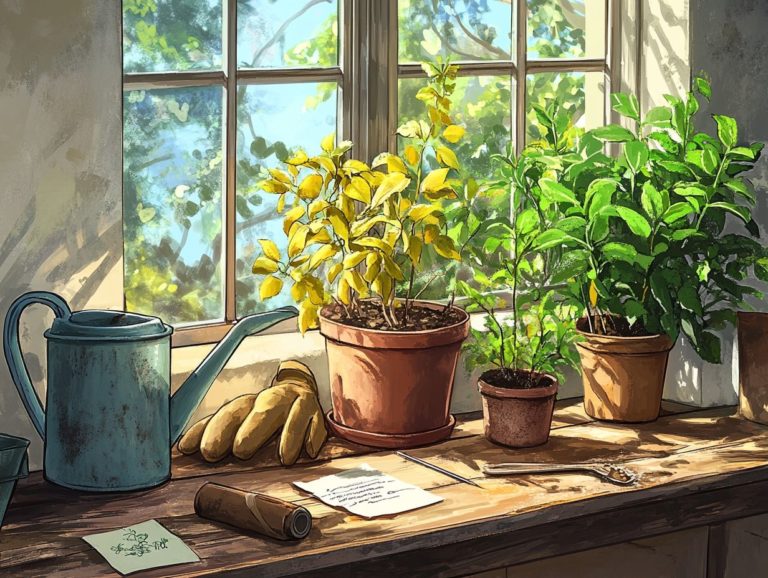How to Revive a Wilting Houseplant
Houseplants infuse your home with beauty and vitality, yet they can occasionally exhibit signs of stress, such as wilting.
Grasping the causes and symptoms of wilting is essential for any dedicated plant owner. This guide provides you with effective revival techniques, vital preventive care tips, and common pitfalls to steer clear of. It also points out when it s prudent to consult a professional for assistance.
Whether you’re a seasoned plant enthusiast or just embarking on your journey, this information will empower you to nurture your houseplants back to health with confidence.
Contents
- Key Takeaways:
- Understanding Wilting in Houseplants
- Reviving a Wilting Houseplant
- Step-by-Step Guide to Reviving a Wilting Plant
- Preventing Wilting in Houseplants
- Tips for Proper Watering and Care
- Common Mistakes When Reviving Wilting Houseplants
- Avoiding Pitfalls and Ensuring Success
- When to Seek Professional Help
- Frequently Asked Questions
- Why is my houseplant wilting?
- How do I know if my houseplant needs to be revived?
- What is the best way to revive a wilting houseplant?
- Can I use fertilizer to revive a dying houseplant?
- What should I do if my houseplant is infested with common houseplant pests?
- How can I prevent my indoor plants from wilting in the future?
Key Takeaways:

- Proper understanding of wilting is crucial in reviving houseplants. Identifying the causes and symptoms can help take appropriate steps to revive the plant.
- A step-by-step guide can help in successfully reviving a wilting houseplant. From assessing the plant’s condition to providing the necessary care, each step is important.
- Preventing wilting in houseplants involves proper watering and care. Knowing when and how much to water, and providing adequate light and nutrients can help keep plants healthy.
Understanding Wilting in Houseplants
Grasping the nuances of wilting in houseplants is vital for any devoted plant parent who values their greenery. This phenomenon often means there could be a problem, such as overwatering, underwatering, or even pest infestations.
Species such as the Peace Lily and Maidenhair Fern are especially susceptible to these stressors. They can manifest symptoms like yellowing leaves, drooping stems, or wilting foliage.
Recognizing these early warning signs is crucial for taking the right steps in plant care. This ensures not only the revival but also the flourishing health of your indoor botanical companions.
Causes and Symptoms of Wilting
The primary culprits behind wilting in houseplants are often linked to overwatering, underwatering, and pesky pests like Spider Mites, each presenting its own set of telltale signs.
When you overwater, you might encounter root rot, a condition where roots decay due to excessive moisture. It reveals itself through yellowing leaves and soil that s not just damp but also has an unpleasant odor. This can hinder your plant’s ability to absorb vital nutrients.
On the flip side, underwatering can leave you with crispy, browning leaf edges and an overall sense of wilting, as your plant struggles to secure enough moisture to thrive.
Pests like Spider Mites also contribute to wilting by feeding on plant sap, leading to stippled leaves and further weakening your plant’s structure. Add low humidity to the mix, and you increase the stress on your greenery, making it crucial for you to regularly monitor moisture levels and inspect for pest infestations.
By grasping these root causes, you ll be better equipped to maintain your plants health and prevent any further decline.
Reviving a Wilting Houseplant
Bringing a wilting houseplant back to life is an exciting challenge! Start by diagnosing the issue at hand, then assess the plant’s environment to pinpoint any potential culprits.
Targeted interventions are crucial, such as repotting the plant with fresh soil or fine-tuning its watering schedule. Don t overlook the importance of examining rootbound plants and checking for any nutrient deficiencies that could hinder recovery.
This methodical attention will greatly enhance your chances of bringing your plant back to life.
Step-by-Step Guide to Reviving a Wilting Plant
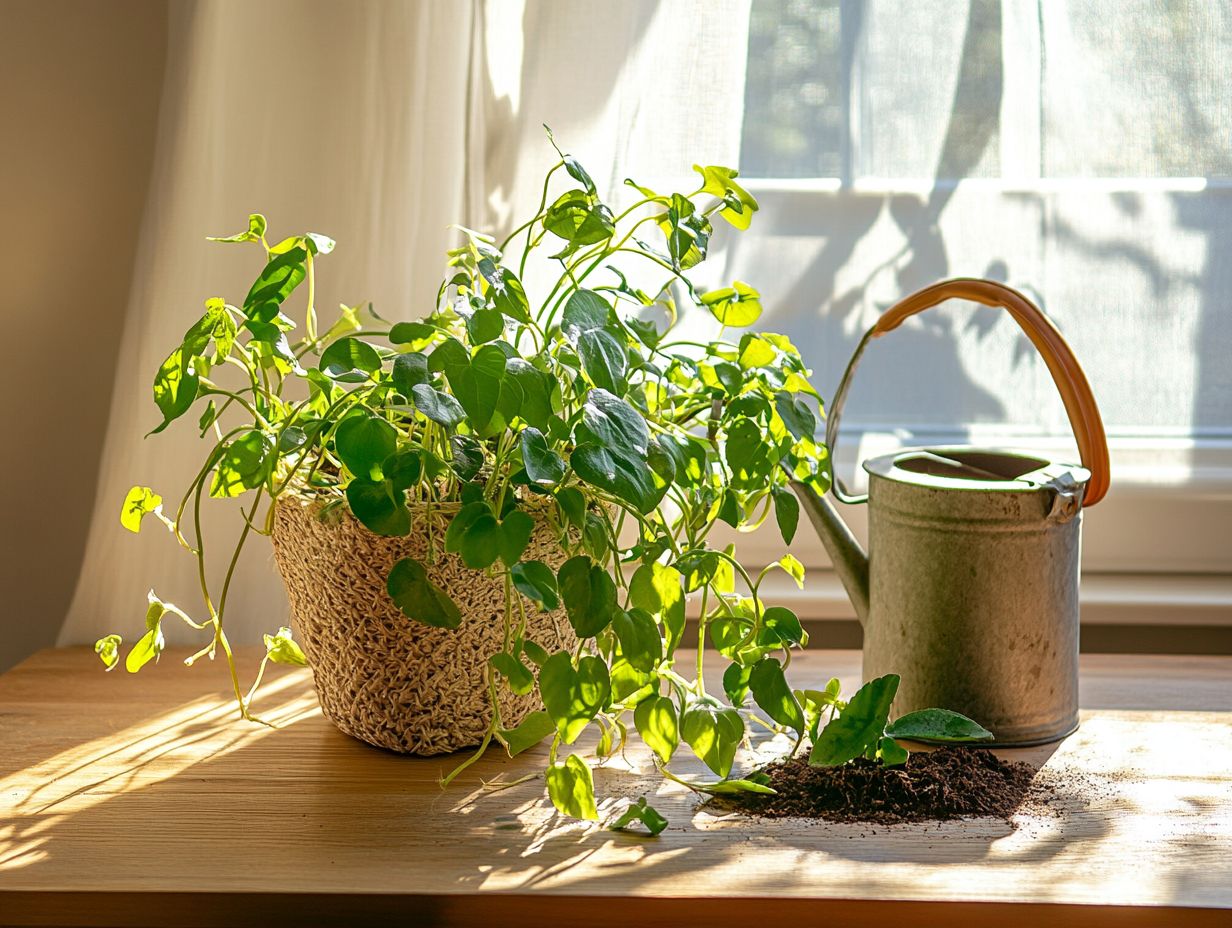
To revive a wilting plant, start by checking the soil moisture. If it’s waterlogged, let it dry before watering again. Be careful not to shock the plant with sudden changes during the repotting process.
Next, determine if the plant’s roots are crowded. If the roots are tightly packed, consider moving it to a bigger pot for more space to thrive.
Then, evaluate the light conditions. Most plants thrive in bright, indirect sunlight, so repositioning might help significantly. Maintaining optimal humidity levels is crucial, especially for tropical varieties. You can mist the leaves or place a humidifier nearby.
Lastly, be cautious with watering; overwatering is a common mistake that can lead to further decline.
Preventing Wilting in Houseplants
To prevent wilting in your houseplants, adopt a proactive approach that includes:
- Proper watering techniques
- Vigilant monitoring of environmental conditions
- Addressing any potential insect damage early
Understanding each plant’s specific needs whether it s the elegant Amaryllis or the vibrant Caladium is essential for nurturing strong roots and encouraging healthy growth.
Tips for Proper Watering and Care
Proper watering is vital for your plants, directly affecting their root health. Factors like humidity levels play a key role in how much water your houseplants actually need.
To ensure they are well-hydrated, regularly assess their environment, paying attention to light exposure, temperature, and humidity. Each plant species has unique water requirements, so knowing whether your plant prefers a dry or moist environment can make a big difference.
Watch for signs of distress:
- Droopy stems: typically indicate underwatering.
- Yellowing leaves and mushy stems: can signal overwatering or nutrient deficiencies.
A moisture meter can be a handy tool to decide when to water, allowing for a more tailored approach to plant care.
Common Mistakes When Reviving Wilting Houseplants
When trying to revive wilting houseplants, avoid common pitfalls that come from hasty actions. For example, overwatering right after repotting can cause shock and worsen the plant s condition.
This highlights the importance of approaching plant care with thoughtfulness and a well-planned strategy.
Avoiding Pitfalls and Ensuring Success
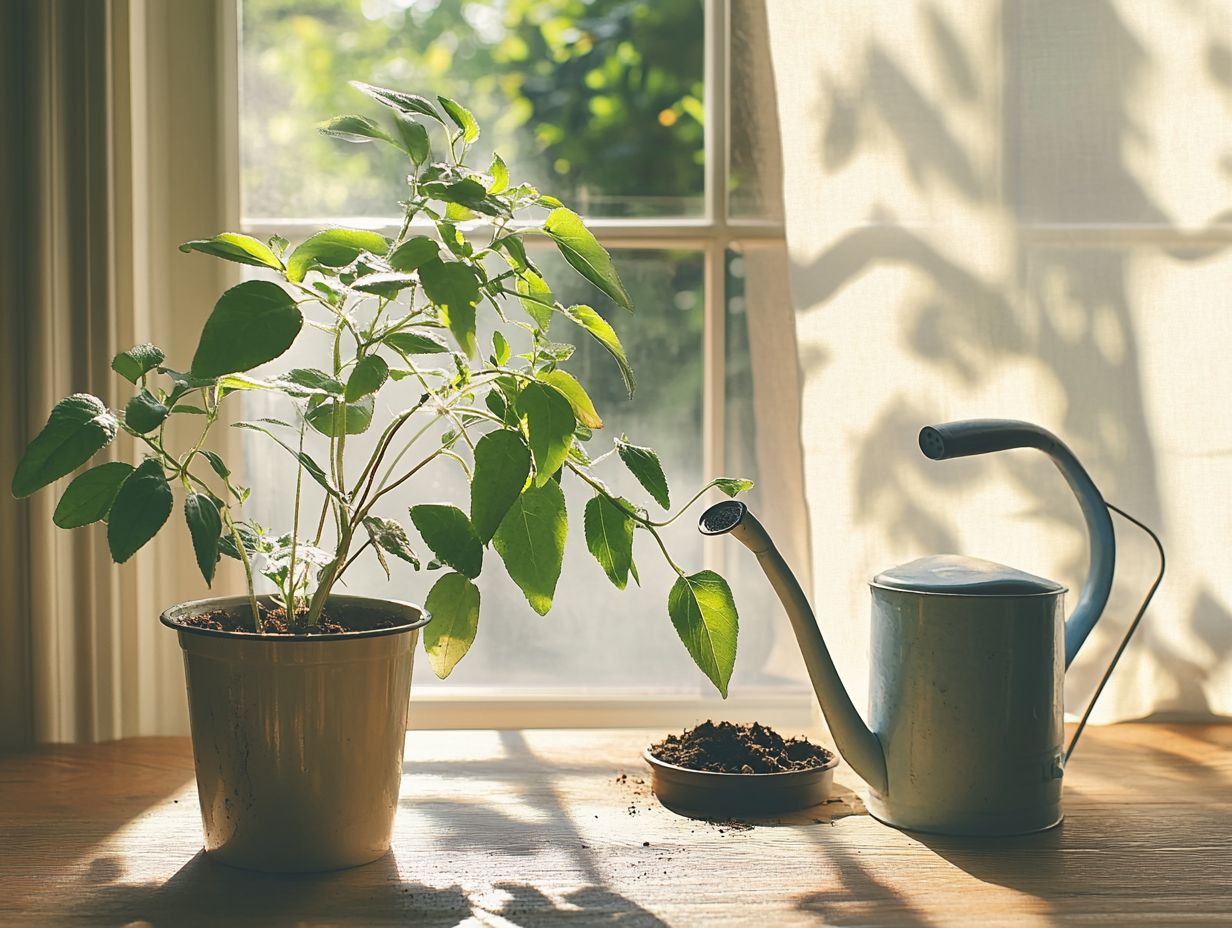
To navigate the challenges of reviving wilting houseplants, implement effective pest control strategies and follow sound plant care advice. Focus on nurturing healthy roots while embracing sustainable living practices.
Start by assessing your plants’ environment. Understanding light exposure, humidity levels, and temperature can significantly impact your success.
Experts recommend making gradual adjustments to these elements, creating a balanced ecosystem for recovery. Using organic fertilizers and natural pest deterrents not only boosts your plants’ resilience but also supports ecological harmony.
Joining local gardening communities can provide invaluable insights and resources, helping you cultivate a supportive network dedicated to sustainable gardening principles.
When to Seek Professional Help
Know when to get help for your houseplants. If problems persist or you can’t identify pests, it s time to consult a professional.
Signs that a Plant Needs Professional Attention
You ll know it s time to call in a professional when you spot severe insect damage, like visible pests, or when your plant has yellow and wilting leaves that stubbornly refuse to perk up, no matter how much love you give it.
Look out for stunted growth, where your plant seems to be stuck in a time warp. Also, check for mold forming on the soil s surface, which is a sure sign of overwatering or inadequate drainage. If you notice spots or discoloration on the leaves, that could signal a lack of essential food for the plant or a fungal infection that s begging for expert attention.
And if you encounter a sticky residue on the leaves, it s often the telltale sign of sap-sucking pests like aphids. This should send you rushing to consult a gardening professional! Act quickly to protect your plant ignoring these red flags can lead to further decline of your beloved houseplants.
Frequently Asked Questions
Why is my houseplant wilting?
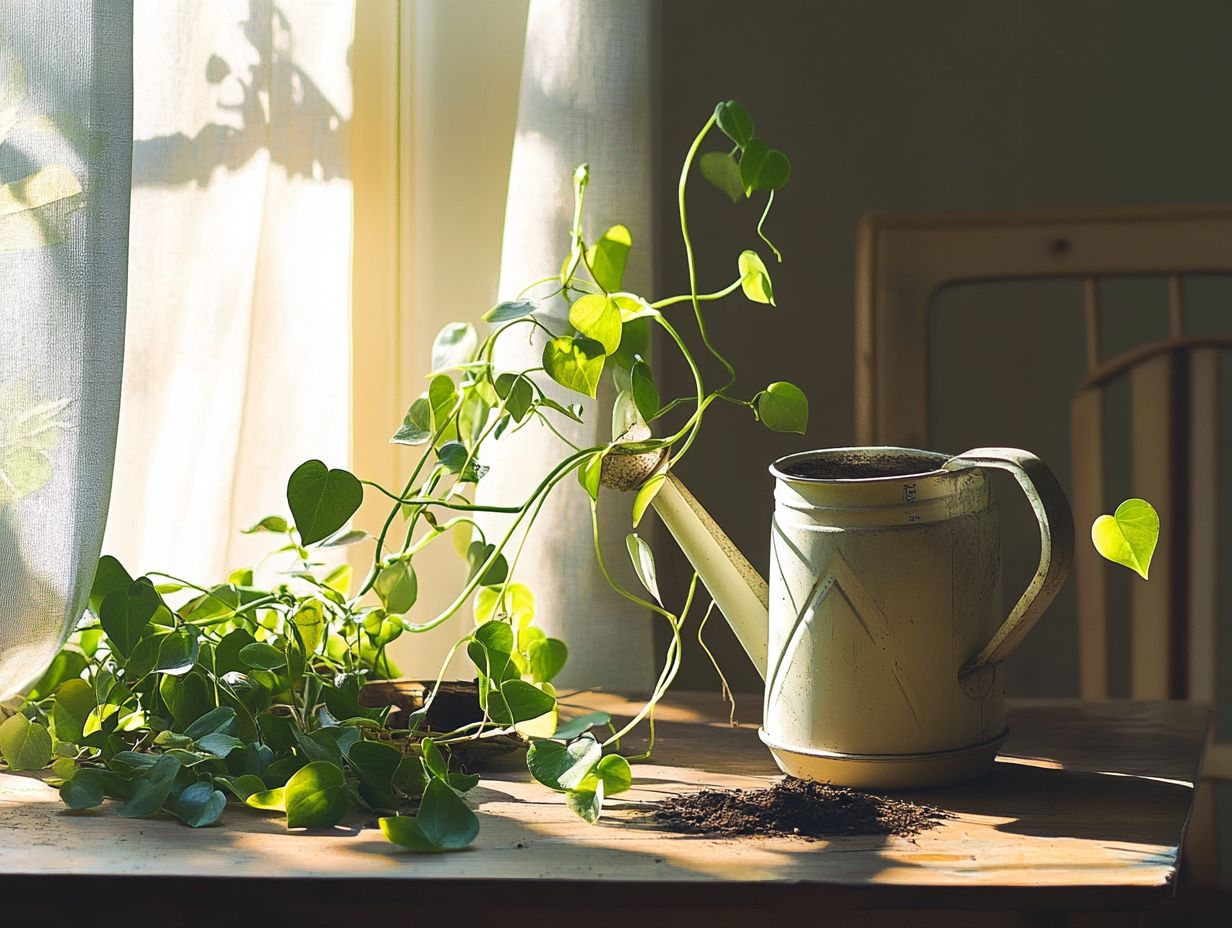
Your houseplant may be wilting for several reasons, including overwatering (giving too much water), underwatering (not giving enough water), or a lack of nutrients. It could also be due to a pest infestation or environmental factors such as too much or too little light.
How do I know if my houseplant needs to be revived?
If your houseplant’s leaves are drooping, yellowing, or shriveling up, it signals distress and needs to be revived. If the soil is dry or the plant appears to be wilting, those are also signs that it needs attention.
What is the best way to revive a wilting houseplant?
The first step is to identify the cause of the wilting. If the plant is overwatered, allow the soil to dry out before watering again. If it is underwatered, give it a good drink of water and maintain a consistent watering schedule. You may also need to repot the plant or adjust its placement to ensure it is getting adequate light and nutrients.
Can I use fertilizer to revive a dying houseplant?
Yes! Fertilizing a wilting houseplant can help revive it. Choose a balanced fertilizer specifically designed for houseplants and follow the instructions for application. Be careful not to over-fertilize, as this can also harm the plant.
What should I do if my houseplant is infested with common houseplant pests?
If your houseplant is wilting due to a pest infestation, act quickly to protect your plant! You can try using natural remedies such as neem oil or insecticidal soap, or consult a professional for more severe infestations. Isolate the affected plant from others to prevent the pests from spreading.
How can I prevent my indoor plants from wilting in the future?
To prevent your houseplants from wilting, provide them with proper care and maintenance. This includes watering them regularly, ensuring they get adequate light and nutrients, and checking for signs of pest infestation. It s also important to repot them as needed and trim off any dead or damaged leaves to promote healthy growth.


